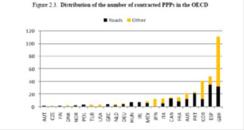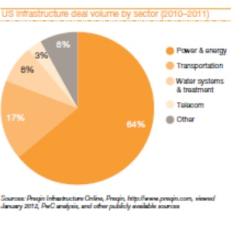Three charts to tell the international growth rebound story
• Growth appears to be recovering outside the U.S. after a weak finish to 2011
• China represents an exception for now, but a rebound there still looks likely later this year
• Emerging-market equities, commodities, EM FX, U.S. corporate earnings all should benefit from improved foreign growth
The gradual healing underway in the U.S. labor and housing markets makes us feel better about growth sustainability even as the economy goes through a mild soft patch in the first quarter of 2012. Another aspect of our forecast, reacceleration of growth outside the United States, also appears to be playing out. Both surveys and hard data point to a wide-ranging pickup in growth in the rest of the world at the start of 2012 after a very weak finish to last year. The main risk to this view, admittedly a big one, is persistent sluggishness in China. Assuming that Chinese growth also improves later this year, as we expect, the international rebound should continue supporting emerging market equities and currencies as well as commodities, along with providing a helpful cushion for U.S. large-cap earnings.
We highlight three charts to tell this story.
1. Exports from global bellwethers Korea and Taiwan strengthened at the start of this year, with the growth rate measured in 3M/3M, SAAR terms jumping to 33.4% in Korea’s case and 6.2% in Taiwan, compared with 0.3% and -4.0%, respectively, back in November. Korean industrial production also posted a strong gain in January. These countries’ exports are highly levered to final demand – both consumer and capital spending – in their main export partners: China, the US, Japan, and the euro area. On a related note, Japanese production also grew impressively in January for the second consecutive month. Hard indicators are improving in other parts of the world, too: euro area industry achieved a modest 0.2% increase in January, not exactly celebration-worthy but still a relief after a steep decline in 11Q4.

2. The highly cyclical tech industry appears to be improving. DRAM prices have climbed significantly from a trough in November, and the semiconductor book-to-bill ratio has moved up after hitting a low in September. The tech industry tends to behave as a high-beta function of global industry.

3. Chinese inflation is falling fast, opening the door for more stimulus. Probably the biggest doubt concerning ex-US growth today is China. Numbers for January and February – including exports - generally looked soft, with industrial production returning to the sluggish pace observed in mid-2011 after a brief pickup late in the fourth quarter. Money-supply figures, meanwhile, suggest that the effect of policy easing thus far remains fairly modest – perhaps not a surprise given that the loosening effort began only in November. At the moment, in quarter-on-quarter terms, the Chinese economy is probably not growing much above the 7.5% “minimum target” announced last week by the authorities.
Nonetheless, we maintain our view that Chinese growth will not take a further step down from here and will pick up as the year progresses, for four reasons. First, we are not sure that the January-February data should be taken literally, given the considerable distortions that the New Year celebration produces in the numbers. Second, the Chinese PMIs, perhaps less susceptible to that holiday effect, have inched upward in the past two months, though they remain at fairly weak levels. Third, inflation has eased significantly, to well within our understanding of the government’s comfort zone, paving the way for continued monetary easing, the effects of which should soon become more apparent. Indeed, February CPI rose by only 3.2% Y/Y, versus a peak of 6.5% back in July, and the monthly run-rate of inflation has slowed considerably more than that. Fourth, stronger growth outside China will lessen one of the main drags experienced by the economy in recent months. All things considered, after below-trend growth in the first half of 2012, we expect a return to 9% growth, or a little more, in the second half of the year.
China: consumer prices (%)

Even with China still scraping along the bottom (by its standards), we expect GDP growth outside of the U.S. of 2.8% (Q/Q, SAAR) in the first quarter, much better than the estimated 1.7% for Q4, which was by far the weakest quarter of the expansion to date. Moreover, with most economies pointing higher at the moment, global growth should display a little more synchronization than was the case in late 2011, when the U.S. was accelerating at the same time that the euro area was dipping into recession and EM Asia was suffering from severe flooding in Thailand. Indeed, the rebound from the Thai incident is helping growth here in the first quarter, and the second quarter pace might prove slightly slower (2.5% on our current estimate). We then look for growth of 3.2% and 3.7% outside the U.S. in 12Q3 and 12Q4, respectively, within shouting distance of its potential or trend rate.
What does this growth story mean for markets?
1. First and foremost, the international-rebound story should benefit emerging market equities, which have made up less than 20% of their 2011 underperformance (relative to the S&P500) and which have lagged in the most recent U.S. stock rally. Continued monetary policy easing in China, and an eventual upturn in the growth data there, may serve as catalysts for this sector.
2. Cyclical and industrial commodities also will likely find support. The run-up in Brent crude prices is not only reflecting a possible Middle East supply shock but also relates in part to stockpiling in China. Chinese crude imports hit a record high in February at around 6 million barrels/day, boosted by strategic reserve building.
3. Better growth and stable-to-higher commodity prices should serve as a tailwind for emerging market currencies, favoring local-currency denominated emerging markets debt (which, considering the modest pace of EM monetary easing, continues to yield above 6%).
4. Meanwhile, better growth outside the U.S. should provide a helpful cushion for U.S. corporate earnings, especially in the large-cap sector, which generates more than 30% of its revenues abroad. Indeed, the international slowdown represented one factor behind the deceleration in earnings growth in 11Q4. At the same time, we do not expect growth at a sufficient pace to eat into the slack present in the global economy. Indeed, unemployment rates will likely continue to rise in some places, like the euro area and the U.K. As such, we expect little change in rhetoric from the Fed and other major central banks in the coming months and see limited prospects for an inflation scare in the near term. As a result, we do not expect the international growth story to add much to this week’s sell-off in U.S. Treasuries.
Chart Info: Charts 1 & 3, JPMSI; data as of February 2012. Chart 3, Source: Bloomberg; data as of March 14, 2012.
Opinions and estimates constitute our judgment and are subject to change without notice. Past performance is not indicative of future results. The material is not intended as an offer or solicitation for the purchase or sale of any financial instrument. J.P. Morgan Asset Management is the brand for the asset management business of JPMorgan Chase & Co. and its affiliates worldwide.





